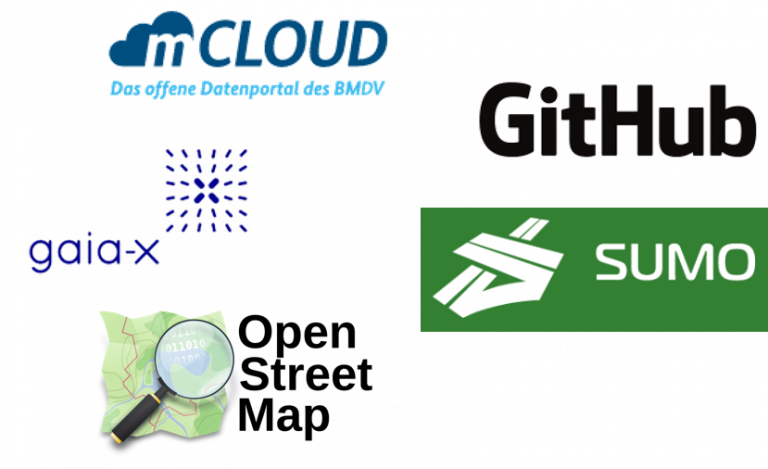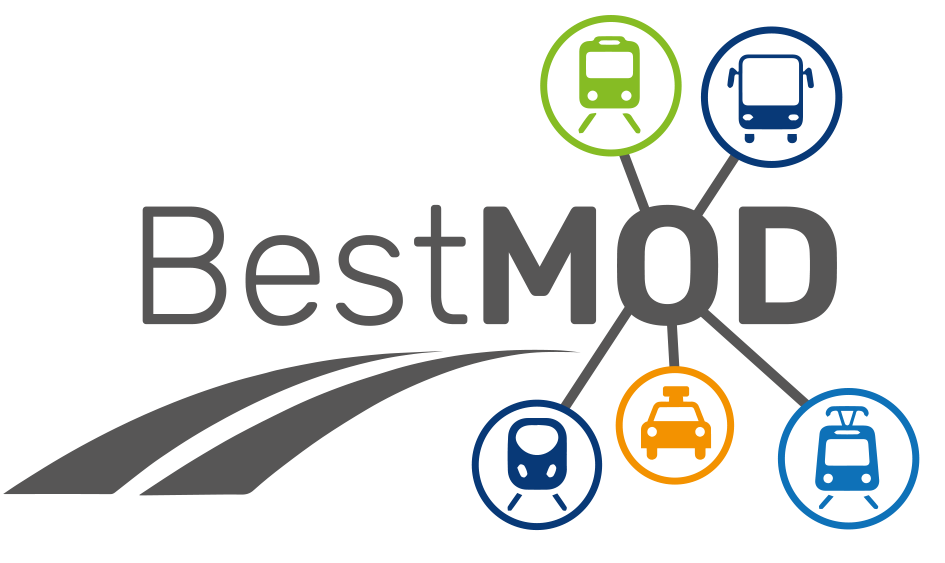Methodology and work packages
Scientific approach
Scientifically, the study is in the field of traffic modeling and addresses both the methods of traffic planning and traffic flow modeling located there. Traffic flow dynamics presupposes an externally given traffic demand and a fixed infrastructure, while traffic planning models the dynamics of demand itself and the effects of a change in infrastructure. With the help of the different data sources and the hybrid mobility surveys, a process and a tool are to be developed that enable such a transport demand to be created in the form of an mmQZZ. The possible changes regarding the choice of means of transport and routes due to changes or optimization in the offers are then examined with the help of a microscopic traffic flow simulation. Microscopic models are characterized by the explicit representation of each road user as a separate unit. These can interact with each other and are controlled by corresponding behavioral models. Even though there has been great progress in this area in recent years due to better models and hardware, the creation of realistic scenarios based on real data remains a major challenge in this discipline. In particular, this can often only be achieved through very granular processes and a high level of expert knowledge. At this point, the study should help to develop a tool in the course of the second pillar, which on the one hand standardizes and, on the other hand, simplifies this to such an extent that the creation of such scenarios for other municipalities and local authorities is generally possible in order to carry out similar studies in their area of responsibility.
Furthermore, the determination of the optimal hybrid on-demand traffic and thus the determination of the potential is a mathematically difficult assignment that can be counted among the NP-hard problems. The traveling salesperson problem (TSP) can be cited as one of the well-known challenges from this problem class. In this field, enormous progress has been made in recent decades thanks to new methods and improved computer technology, so that even more complex tasks such as a multi-depot or multi-vehicle TSP or the hybrid on-demand traffic to be examined here can now be solved with heuristics or even optimized globally.
In addition, the ratios in the mmQZZ cannot be indicated exactly, as they are subject to certain uncertainties. The same applies to the travel resistances, which cannot be given exactly because, for example, travel times and parking space availability fluctuate daily or cannot be determined exactly. Using interval arithmetic, the uncertain parameters can now also be considered to determine the optimal hybrid on-demand traffic.
Timeline
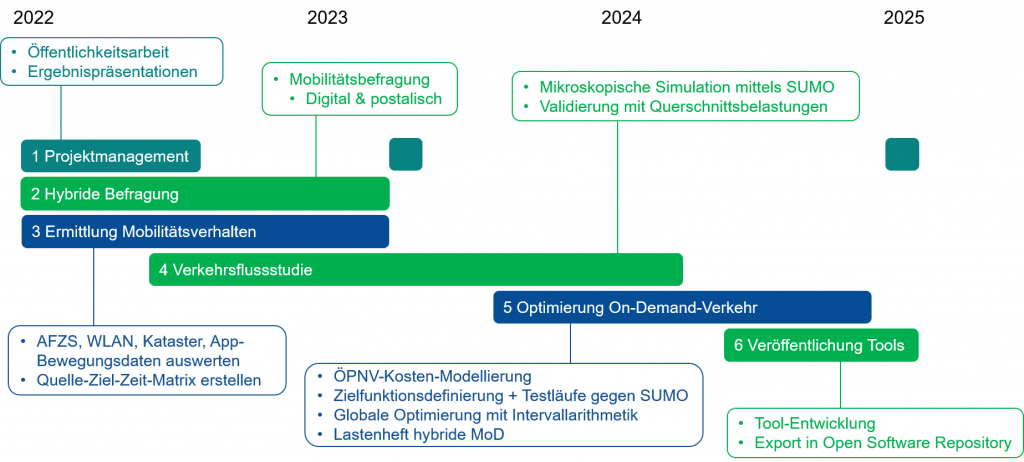
Description of the work packages
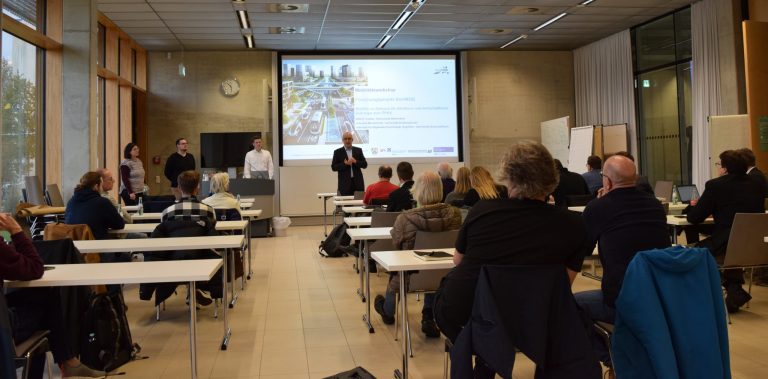
Work package 1: Project management
Key findings of the work package:
- Ensuring the project progress
- Information for public transport users and potential customers
- Information for other municipalities and transport companies
Work package 2: Hybrid survey on mobility
The aim of WP 2 is to collect data on current mobility behavior and mobility needs for the creation of the multimodal mmQZZ. To this end, a comprehensible methodology and a guided process are to be developed that will enable other stakeholders to apply it in their area in the future.
Key findings of the work package:
- Creation of a survey methodology
- Evaluation of the data
- Preparation for the transfer into a process

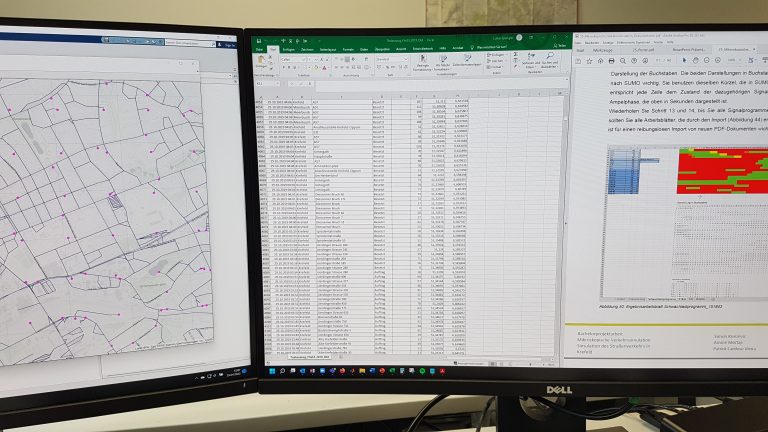
Work package 3: Simulation scenario and process
In work package 3, new public transport mobility data is collected, processed and merged with the data from the preliminary project MWS 2025. This will first create a QZZ matrix for public transport and then an mmQZZ matrix using the results from the mobility survey. In addition, the data evaluation for the real MIV travel times, which was also carried out in the preliminary project, is now being compared with cross-sectional load data in order to validate the calculated travel times. In all steps, we make sure that the transfer to another municipality is possible.
Key findings of the work package:
- prepared data sets
- Creation of the simulation
- Software for simplified creation and transferability of similar scenarios by other users
- Validated MIV routes and travel times
- calibrated mmQZZ matrix
Work package 4: Preparation of a traffic flow study
The aim of WP 4 is to create a microscopic traffic flow study using DLR’s open-source Simulation of Urban Mobility (SUMO) software. As this is a very time-consuming and complex process, a software tool for the automated and guided creation of such scenarios is to be developed as part of this project, which will ultimately enable not only the results of the specific study for Krefeld, but also the methodology as such to be used and transferred for other applications.
Here you can find out how these vehicles work, what safety standards they already meet in real-world laboratories and why they are not yet in widespread use.
Key findings of the work package:
- Software tool for the simplified and guided creation of multimodal microscopic traffic simulation scenarios
- Multimodal traffic scenario for Krefeld
- Potential for public transport by including new forms of service
- Improved determination of travel resistance and guaranteed inclusion of results
Work package 5: Optimization and validation of hybrid on-demand traffic
Work package 5 incorporates the information, data and models from the previous TAPs and thereby forms the basis for mathematical modeling and optimization, the result of which will be the optimal service area(s) and the number of vehicles for hybrid on-demand transport. To be able to evaluate economic key figures and use them as a basis for optimization, the costs for OD services and the existing scheduled bus services are determined and modeled at the beginning.
Key findings of the work package:
- Statements on the potential of stronger networking of existing means of transport
- Potential for public transport through the inclusion of new forms of service
- Specifications for the implementation of hybrid on-demand transport
Work package 6: Consolidation and publication of the study tools
In WP 6, the tools for conducting the study are consolidated, finalized if necessary and expanded to include the option of functional and automated results processing. The aim is, on the one hand, to ensure the intended usability of other users following the study and, on the other hand, to make the tools available through the final provision via corresponding open formats and portals.
Key findings of the work package:
- Results can be visualized automatically
- Possibility to prepare or create an executive summary
- Data and software are available in appropriate places (e.g. mCLOUD/SUMO repository, etc.)
